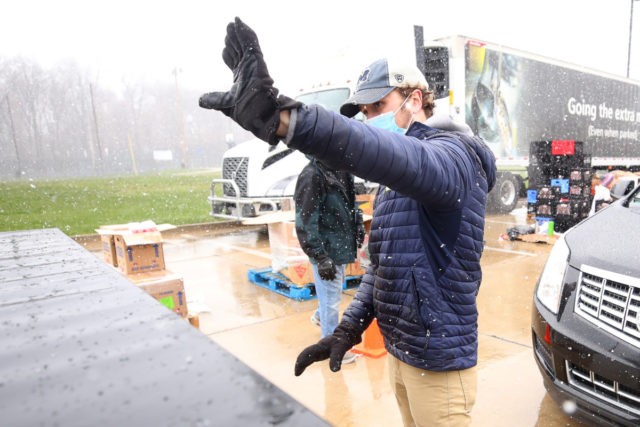The ranks of the unemployed swelled by millions last week.
New applications for unemployment hit 5.245 million in the week ended April 11, Labor Department data showed Thursday. Economists had forecast around 5 million claims.
Last week’s initially reported total of 6.606 million was revised up slightly to 6.615 million. For the March 28 week, 6.9 million workers filed claims. The week before, 3.3 million. The new report brings the total of jobs lost to the coronavirus crises to just over 22 million in the course of four weeks.
The four week moving average of claims, typically looked to as a less volatile and more accurate measure of the labor market, jumped to 6.066 million, an increase of nearly 2.6 million.
Thursday’s report showed a total of 12 million Americans received unemployment payments in the week ended April 4, a new record high. This number, which is reported with a week’s lag, represents an increase from 7.4 million the prior week. With so many jobs being lost each week, it’s likely the new claims will continue to push the total number of people receiving unemployment benefits higher.
The CARES Act, passed to offset the economic impact of the coronavirus and stay-at-home orders, expanded the ranks of those eligible to file claims for unemployment benefits and raised the amount paid to unemployed workers. Self-employed workers and independent contractors can now file for benefits, expanding the number of claims.
New claims for state unemployment benefits are a proxy for layoffs. Released weekly, they are some of the few real-time indicators of economic conditions.
Actual job losses may be higher than the most recent figures reveal. Applications in many states have been hampered by websites and phone lines failing due to the rapid rise in the volume of claims.
Employers are slashing their payrolls to try to stay afloat because their revenue has collapsed, especially at restaurants, hotels, gyms, movie theaters and other venues that depend on face-to-face interaction. Auto sales have sunk, non-healthcare related manufacturing has ground to a halt, and factories have closed.
More than 90 percent of the U.S. population is now under stay-at-home orders, which have been imposed by most U.S. states. This trend has intensified pressure on businesses, most of which face rent, loans and other bills that must be paid.
The number of new claims fell in some of the biggest states. New claims in California was fell by 257,848. Ohio claims fell by 68,973, Michigan fell by 169,234, and New Jersey fell by 74,236. Virginia’s figure dropped 40,646, Texas’ declined 41,600.
Claims in New York rose by 51,498, likely because many workers who lost jobs had trouble getting benefits earlier because the state’s systems for accepting new applications were overwhelmed. Claims were also up sharply in Colorado, rising 58,747.

COMMENTS
Please let us know if you're having issues with commenting.